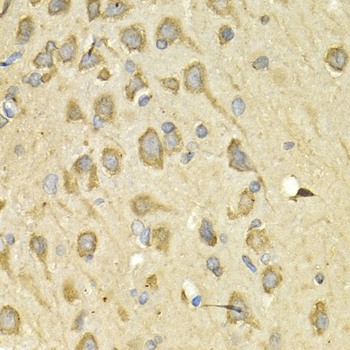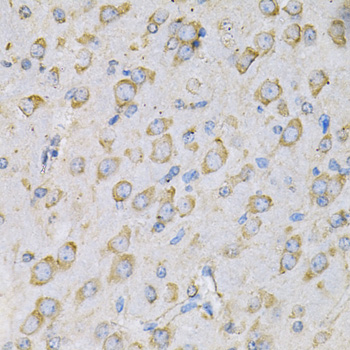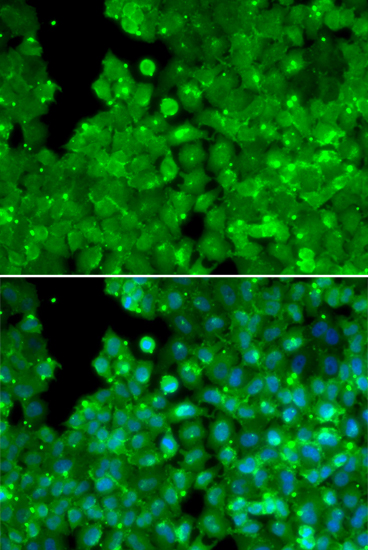-
Product Name
IL10RA Polyclonal Antibody
- Documents
-
Description
Polyclonal antibody to IL10RA
-
Tested applications
WB, IHC, IF
-
Species reactivity
Human, Mouse, Rat
-
Alternative names
IL10RA antibody; CD210 antibody; CD210a antibody; CDW210A antibody; HIL-10R antibody; IL-10R1 antibody; IL10R antibody; interleukin-10 receptor subunit alpha antibody
-
Isotype
Rabbit IgG
-
Preparation
Antigen: Recombinant fusion protein containing a sequence corresponding to amino acids 22-230 of human IL10RA (NP_001549.2).
-
Clonality
Polyclonal
-
Formulation
PBS with 0.02% sodium azide, 50% glycerol, pH7.3.
-
Storage instructions
Store at -20℃. Avoid freeze / thaw cycles.
-
Applications
WB 1:500 - 1:2000
IHC 1:50 - 1:200
IF 1:50 - 1:200 -
Validations

Western blot - IL10RA Polyclonal Antibody
Western blot analysis of extracts of various cell lines, using IL10RA antibody at 1:1000 dilution.Secondary antibody: HRP Goat Anti-Rabbit IgG (H+L) at 1:10000 dilution.Lysates/proteins: 25ug per lane.Blocking buffer: 3% nonfat dry milk in TBST.

Immunohistochemistry - IL10RA Polyclonal Antibody
Immunohistochemistry of paraffin-embedded rat brain using IL10RA Antibody at dilution of 1:200 (40x lens).

Immunohistochemistry - IL10RA Polyclonal Antibody
Immunohistochemistry of paraffin-embedded rat brain using IL10RA Antibody at dilution of 1:100 (40x lens).

Immunohistochemistry - IL10RA Polyclonal Antibody
Immunohistochemistry of paraffin-embedded mouse brain using IL10RA Antibody at dilution of 1:100 (40x lens).

Immunofluorescence - IL10RA Polyclonal Antibody
Immunofluorescence analysis of U2OS cells using IL10RA antibody . Blue: DAPI for nuclear staining.
-
Background
Cell surface receptor for the cytokine IL10 that participates in IL10-mediated anti-inflammatory functions, limiting excessive tissue disruption caused by inflammation. Upon binding to IL10, induces a conformational change in IL10RB, allowing IL10RB to bind IL10 as well. In turn, the heterotetrameric assembly complex, composed of two subunits of IL10RA and IL10RB, activates the kinases JAK1 and TYK2 that are constitutively associated with IL10RA and IL10RB respectively. These kinases then phosphorylate specific tyrosine residues in the intracellular domain in IL10RA leading to the recruitment and subsequent phosphorylation of STAT3. Once phosphorylated, STAT3 homodimerizes, translocates to the nucleus and activates the expression of anti-inflammatory genes. In addition, IL10RA-mediated activation of STAT3 inhibits starvation-induced autophagy.
Related Products / Services
Please note: All products are "FOR RESEARCH USE ONLY AND ARE NOT INTENDED FOR DIAGNOSTIC OR THERAPEUTIC USE"
